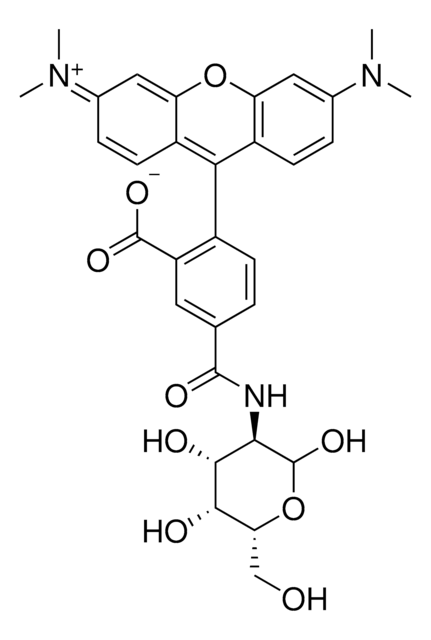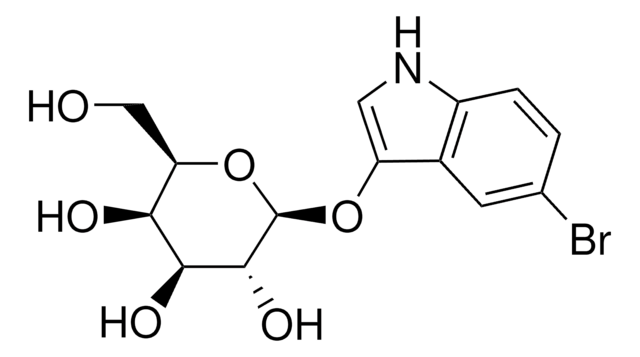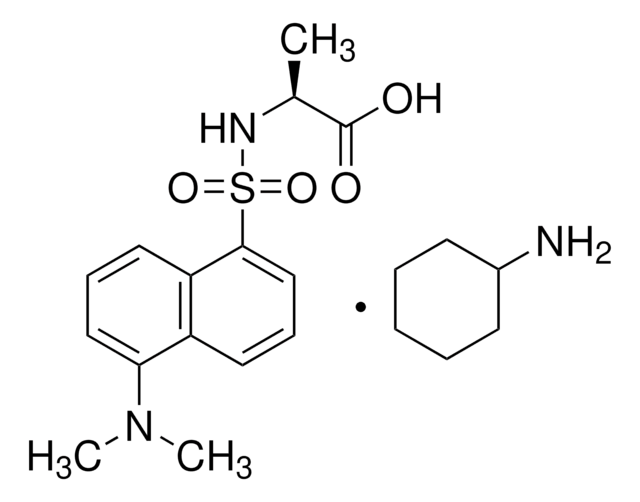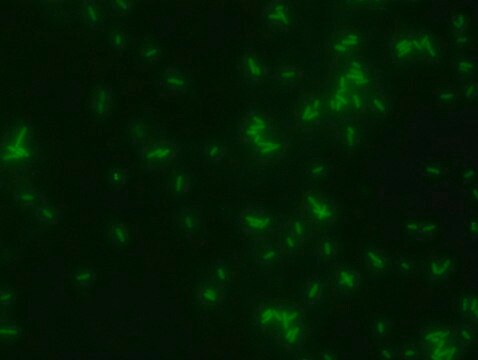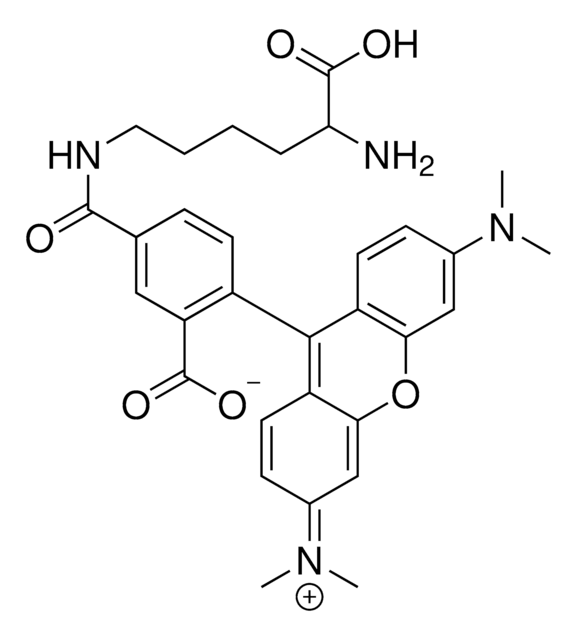SBR00070
Coumarin Labeled D-Lysine
Suitable for fluorescent microbial imaging
Sinonimo/i:
D-Lysine blue, D-Lysine, N6-[(7-hydroxy-2-oxo-2H-1-benzopyran-3-yl)carbonyl]- (ACI), FDAA
About This Item
Prodotti consigliati
Livello qualitativo
Forma fisica
solid
Temperatura di conservazione
−20°C
Stringa SMILE
O=C(NCCCC[C@@H](N)C(O)=O)C1=CC2=CC=C(O)C=C2OC1=O
InChI
1S/C16H18N2O6/c17-12(15(21)22)3-1-2-6-18-14(20)11-7-9-4-5-10(19)8-13(9)24-16(11)23/h4-5,7-8,12,19H,1-3,6,17H2,(H,18,20)(H,21,22)/t12-/m1/s1
QYOUXTJCRWPQLR-GFCCVEGCSA-N
Descrizione generale
Applicazioni
- Bacterial cell wall morphology
- Bacterial cell wall formation or remodeling activity
- Bacterial viability/activity
- Identify bacterial activity on surfaces or in substances
- Differentiation between various bacterial strains according to their incorporation profile of different D amino acids and sugars
Risultati analitici
- Fluorescent microscopyapplication: Coumarin Labeled D-lysine has excitation/emission wavelength rangeat 360/450 nm.
- The recommended working concentrationin fluorescent microscopy imaging application is between 250µM-500 µM inworking medium
- Aliquots of the DMSO solution can bestored at -20 ⁰C, protected from light for at least one month.
Prodotti correlati
Codice della classe di stoccaggio
11 - Combustible Solids
Classe di pericolosità dell'acqua (WGK)
WGK 3
Punto d’infiammabilità (°F)
Not applicable
Punto d’infiammabilità (°C)
Not applicable
Certificati d'analisi (COA)
Cerca il Certificati d'analisi (COA) digitando il numero di lotto/batch corrispondente. I numeri di lotto o di batch sono stampati sull'etichetta dei prodotti dopo la parola ‘Lotto’ o ‘Batch’.
Possiedi già questo prodotto?
I documenti relativi ai prodotti acquistati recentemente sono disponibili nell’Archivio dei documenti.
Il team dei nostri ricercatori vanta grande esperienza in tutte le aree della ricerca quali Life Science, scienza dei materiali, sintesi chimica, cromatografia, discipline analitiche, ecc..
Contatta l'Assistenza Tecnica.
